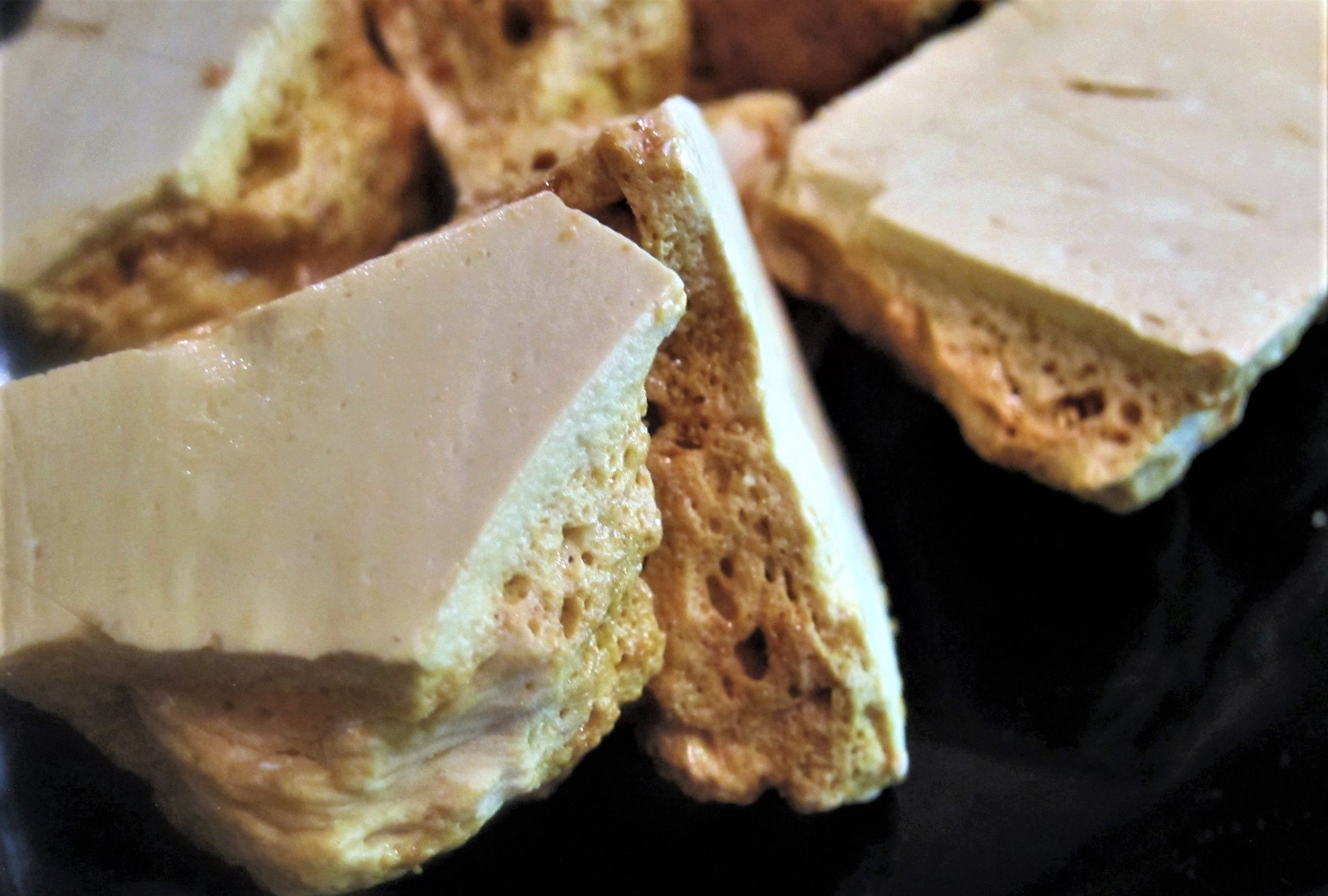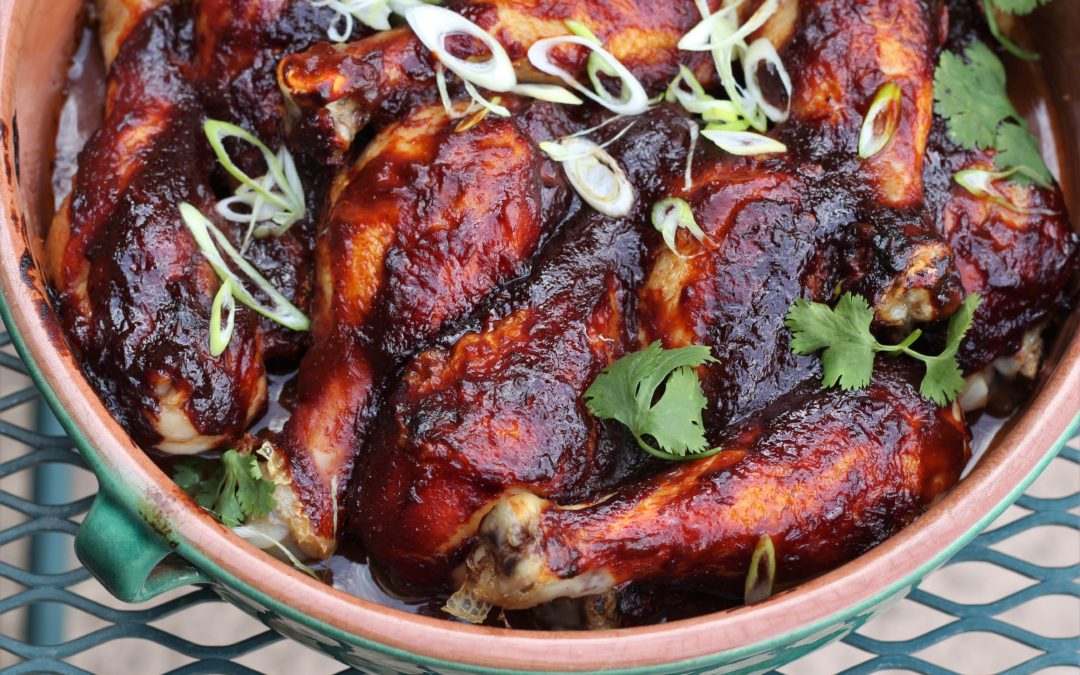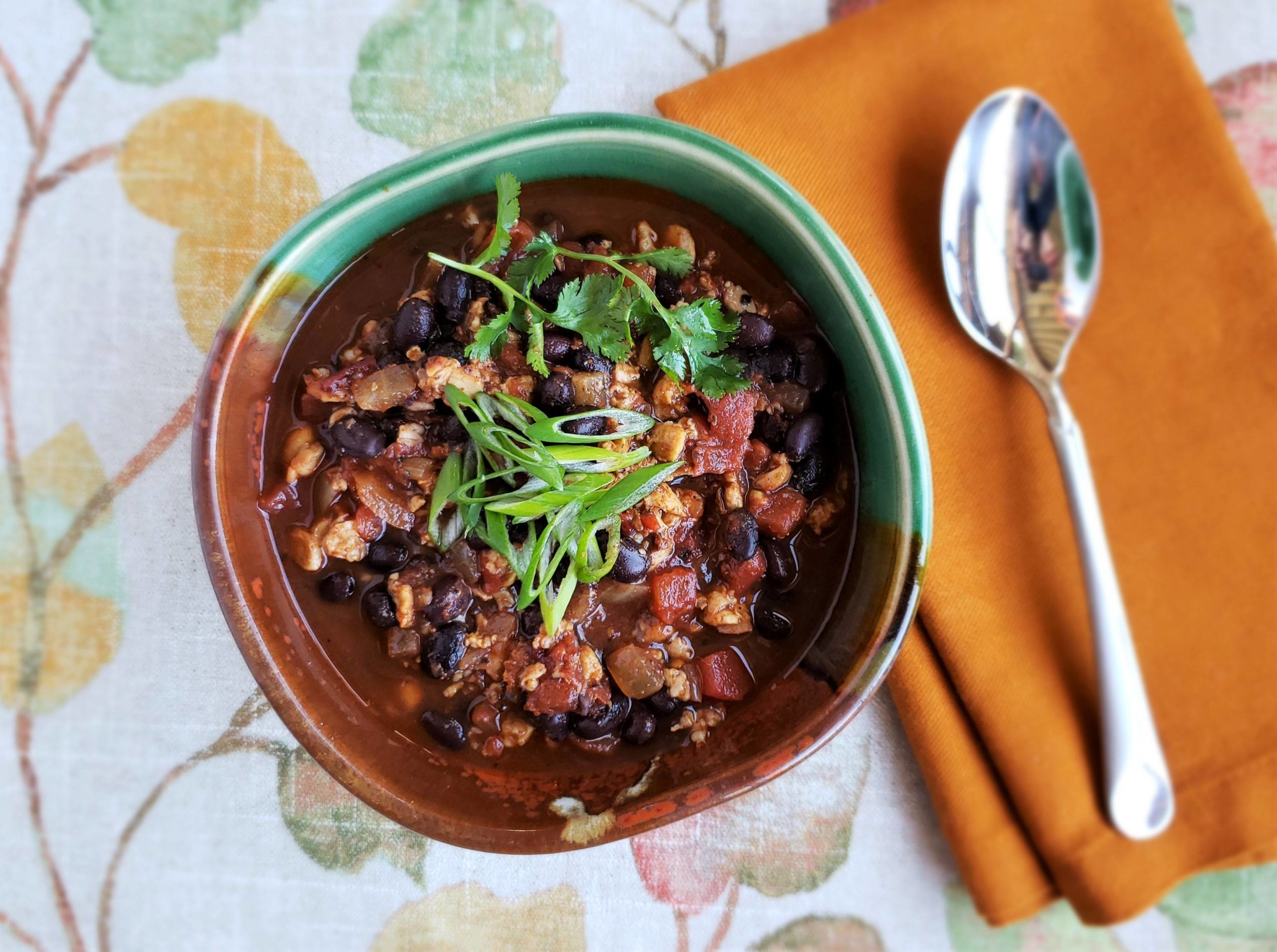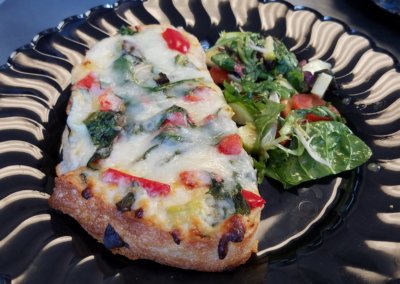Olive-oil galette--Is it a tart? A pizza with a folded edge? A pie you eat for dinner? It’s delicious no matter what you call it and, depending on your fillings, this olive-oil galette works for breakfast, lunch or dinner. This quick, easy tart base can be made...

Easy homemade Honeycomb for a Flavorful Sweet Treat
Easy homemade Honeycomb for a Flavorful Sweet Treat

Cinder Toffee from Royal Highlands Fair in Scotland
I ate honeycomb for the first time at the Royal Highlands show in Scotland where it was called cinder toffee. I adopted a Scottish accent after the first bite.
I’d eaten honeycomb-covered chocolate bars in London, but fresh-made honeycomb had heady aromas of caramel, toffee, butter, smoky flavors and a hint of bitter. All of these qualities make it a perfect garnish for flavor-forward desserts.
Honeycomb is also known as hokey pokey (New Zealand and Australia) and tire-éponge (Quebec/France). This recipe was provided by a pastry chef who specializes in flavorful foods. Chef Country Velador of New Wave Market and Super Chunk Sweets & Treats shared her recipe scaled down for home-kitchen use.
Ingredients (Super Chunk Sweets & Treats Recipe)
1 tablespoon baking soda
½ cup water
⅓ cup honey
¼ cup corn syrup
1½ cup sugar
Steps

Superchunk Sweets & Treats Restaurant Quantity
- Line baking sheet with a silpat and set aside. Measure out the baking soda and leave next to the sheet pan with a whisk.
- In a large saucepan (final mixture will foam up dramatically), combine the water, honey, and corn syrup. Stir to dissolve the honey and corn syrup as much as you can. Add the sugar and carefully stir in, being careful not to get sugar on the sides of the pan. Put on the stove over high heat.
- Bring the mixture to a boil and clip on a candy thermometer. Cook until the candy thermometer reads 305F.
- Take the pot next to the silpat and pour in the baking soda and quickly whisk it in. The honeycomb will puff up. Quickly pour it out onto the silpat, pouring all of the candy right in the center of the pan.
- Let cool completely before breaking up. Store in an airtight container.
Honeycomb goes a long way as a garnish for cakes or cupcakes icing, paired with chocolate, tucked in a yogurt, fruit parfait or sprinkled on ice cream or roasted bananas. Cook some up and play with it.
Eat within a few days or share with people to increase your popularity immensely. If it sits too long, it begins to absorb moisture from the air quickly and becomes sticky and soft. Don’t store in the fridge for the same reason, and wrap it in plastic wrap after it has completely dried to avoid exposure to moisture.

Corn, Tomato and Spinach Olive-Oil Galette

Go-To BBQ Sauce: Smokey, Spicy, Tangy & Sweet
Creating a BBQ sauce recipe is basically asking for a culinary throwdown. With parts of our country owning different styles and declaring theirs as the best, I tread on hallowed ground. However, when I get a craving for BBQ, these are the ingredients that hit the...

Lazy, Lighter Chocolat Chaud—Hot Chocolate with French Airs
It snowed in the desert on National Margarita day. Neither event makes sense—a beach-boozy drink celebrated in winter and snow-covered cactus. Instead of tequila, my beverage is based on chocolate liquor—the meat of the cocoa bean.Any cold day seems a good day for a...

Michele Redmond
French-trained Chef, Registered Dietitian Nutritionist & Food Enjoyment Activist
It's about Making Food First
Get Eat Well Academy periodic updates on easy ways to choose and cook foods that satisfy your appetite, nurture your body and make eating well a pleasure.





 The pleasure of food, good health and well-being through simple habits for eating well and flexitarian low-key cooking.
The pleasure of food, good health and well-being through simple habits for eating well and flexitarian low-key cooking. 











 1. Trim option #1: Trim off the top and bottom of the pineapple, then slice the outer scales off to reveal the flesh. Cut large sections from off the hard core. Dice or small chop enough pineapple for 2 cups and add to a mixing bowl.
1. Trim option #1: Trim off the top and bottom of the pineapple, then slice the outer scales off to reveal the flesh. Cut large sections from off the hard core. Dice or small chop enough pineapple for 2 cups and add to a mixing bowl.




 Swapping out a meat-based ingredient for a plant-based one is a balancing act of texture, taste qualities (like umami) and flavors from aromatic compounds. Particularly with liver—can you think of any plant that tastes or smells like it? Please let me know if you do.
Swapping out a meat-based ingredient for a plant-based one is a balancing act of texture, taste qualities (like umami) and flavors from aromatic compounds. Particularly with liver—can you think of any plant that tastes or smells like it? Please let me know if you do.